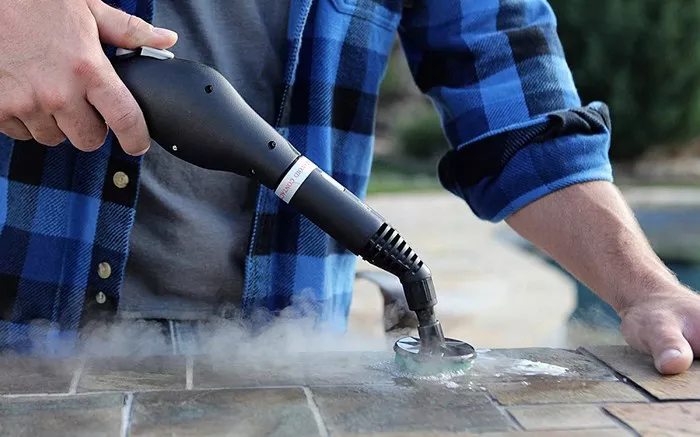When it comes to cleaning carpets and upholstery, two methods stand out: steam cleaning and Chem-Dry. Both offer unique benefits and are effective in their own right. However, determining which method is better depends on various factors such as the type of stains, material of the surface, and personal preferences. In this guide, we’ll delve into the differences between steam cleaning and Chem-Dry, explore their pros and cons, and help you make an informed decision.
Steam Cleaning:
Steam cleaning, also known as hot water extraction, is a popular method for deep cleaning carpets and upholstery. It involves the use of hot water and detergent under high pressure to agitate the carpet fibers and dissolve dirt and stains. Here are some key points to consider:
1. Effectiveness: Steam cleaning is highly effective in removing deep-seated dirt, stains, and allergens from carpets and upholstery. The hot water and detergent penetrate the fibers, loosening dirt and grime for easy extraction.
2. Deep Cleaning: One of the main advantages of steam cleaning is its ability to provide a thorough, deep clean. It reaches deep into the carpet fibers, removing dirt and allergens that may be trapped below the surface.
3. Usage of Chemicals: While steam cleaning primarily relies on hot water and detergent, some solutions may contain chemicals. However, many professional steam cleaning services offer eco-friendly options for those concerned about chemical exposure.
4. Drying Time: One drawback of steam cleaning is the longer drying time compared to other methods. Since it uses water, carpets and upholstery may take several hours to dry completely, which can be inconvenient.
Chem-Dry:
Chem-Dry is a proprietary carpet cleaning method that utilizes carbonation to lift dirt and stains from carpet fibers. Unlike steam cleaning, Chem-Dry uses minimal water, making it a popular choice for those seeking faster drying times. Here are some key points to consider:
1. Low Water Usage: Chem-Dry uses significantly less water than steam cleaning, making it an ideal choice for carpets and upholstery that cannot withstand excess moisture. The carbonation process allows for a deeper clean without saturating the fibers.
2. Quick Drying Time: One of the major advantages of Chem-Dry is its quick drying time. Since it uses less water, carpets and upholstery typically dry within a few hours, minimizing downtime and inconvenience.
3. Chemical-Free Options: Chem-Dry offers a range of cleaning solutions, including chemical-free options for those with sensitivities or environmental concerns. These solutions are formulated to effectively remove stains and odors without harsh chemicals.
4. Effective Stain Removal: Chem-Dry’s carbonation process effectively lifts dirt and stains from carpet fibers without causing damage. It can target specific areas of concern, such as pet stains or high-traffic areas, with impressive results.
Comparison:
Now that we’ve explored the key features of steam cleaning and Chem-Dry, let’s compare them side by side to help you determine which method is better suited to your needs:
1. Cleaning Power: While both methods are effective in cleaning carpets and upholstery, steam cleaning tends to provide a deeper, more thorough clean, especially for heavily soiled areas.
2. Drying Time: Chem-Dry offers a significant advantage in terms of drying time, making it a preferred choice for those who require quick turnaround times or have limited drying space.
3. Chemical Usage: Steam cleaning may involve the use of chemicals in some cases, whereas Chem-Dry offers chemical-free options for those concerned about environmental impact or chemical exposure.
4. Suitability for Different Surfaces: Steam cleaning is suitable for most types of carpets and upholstery, but it may not be suitable for delicate fabrics or materials that cannot withstand moisture. Chem-Dry’s low-water method makes it a safer option for sensitive surfaces.
5. Cost: The cost of steam cleaning and Chem-Dry services can vary depending on factors such as the size of the area to be cleaned, the extent of staining, and the location. It’s essential to obtain quotes from reputable providers to compare prices accurately.
Conclusion
In conclusion, both steam cleaning and Chem-Dry offer effective solutions for cleaning carpets and upholstery. Steam cleaning provides a deep, thorough clean but may have longer drying times and could involve the use of chemicals. On the other hand, Chem-Dry offers quick drying times, minimal water usage, and chemical-free options, making it a preferred choice for some consumers. Ultimately, the decision between steam cleaning and Chem-Dry depends on your specific needs, preferences, and the condition of the surfaces to be cleaned. By weighing the pros and cons of each method and considering factors such as cleaning power, drying time, and chemical usage, you can make an informed choice that best suits your requirements.
FAQs:
Q1. Is steam cleaning safe for all types of carpets and upholstery?
Yes, steam cleaning is generally safe for most types of carpets and upholstery. However, it’s essential to check the manufacturer’s recommendations and test a small, inconspicuous area before proceeding with the cleaning process. Some delicate fabrics or materials may not withstand the heat and moisture associated with steam cleaning.
Q2. How often should I have my carpets and upholstery professionally cleaned?
The frequency of professional cleaning depends on several factors, including the amount of foot traffic, presence of pets or children, and the level of soiling. As a general guideline, most experts recommend having carpets and upholstery cleaned professionally every 12 to 18 months. However, high-traffic areas may require more frequent cleaning to maintain their appearance and prolong their lifespan.
Q3. Can Chem-Dry remove tough stains like pet urine and wine spills?
Yes, Chem-Dry’s carbonation process is highly effective in removing tough stains such as pet urine, wine spills, and coffee stains. The specialized cleaning solutions and equipment used by Chem-Dry technicians can penetrate deep into the carpet fibers, lifting and extracting even the most stubborn stains. However, it’s essential to address stains promptly and avoid DIY remedies that may set the stain or cause further damage.

